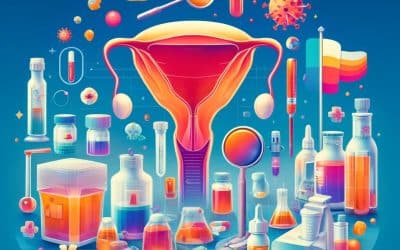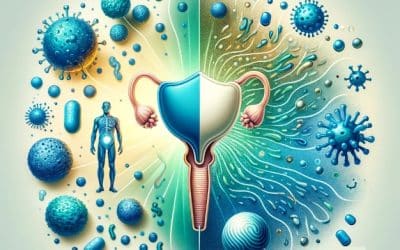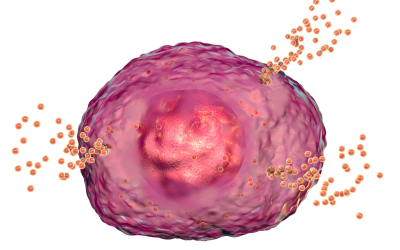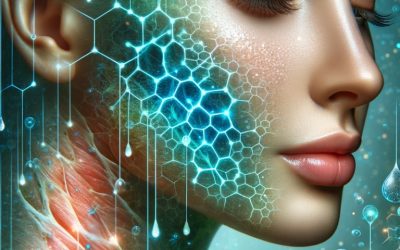Should you do a liver gallbladder cleanse?
There is a popular new fad called a liver gallbladder cleanse that people on social media are raving about. Seems too good to be true, eh? Before you jump to do the gallbladder flush, I wanted to bring a few things to your attention. First of all, since you are not currently experiencing gallbladder symptoms, what is your primary driver to do the cleanse? Symptoms would include severe right upper quadrant pain, sometimes accompanied by nausea and vomiting after eating for 1-4 hours. Second of all, there use of the gallbladder flush is not backed by sound scientific evidence, it is mostly anecdotal. “Analysis of one group of passed “gallstones” revealed they consisted of 75-percent fatty acids and contained no cholesterol, bilirubin, or calcium. Further experimentation suggested the spheroids were ‘soap stones’, created by the interaction of digestive enzymes with certain components of olive oil and lemon juice” (Gaby, 2009). There are also complications associated with this method, if it really does mobilize gallstones. It may cause the stones to become trapped in the common bile duct, leading to a life- threatening medical emergency!
The good news is, gallstones are very common in Western populations. And evidence indicates that the risk can be reduced by implementing some simple lifestyle changes such as maintaining an idea body weight and consuming a healthy diet.
About 80% of these stones contain cholesterol, and the remaining 20% are pigment stones. There are also varying amounts of calcium salts, bile acids, and other components. Gallstone formation is called cholelithiasis and it can result from a combination of multiple factors, including supersaturation of bile with cholesterol and impaired gallbladder emptying. There are many reasons for this, so first, determine if any of these are a risk factor:
- Obesity / weight loss– obesity is associated with an increased risk of gallstones and weight loss may reduce the risk of gallstone formation if you are overweight. However, try to also avoid rapid weight loss, as it can promote the development of gallstones. Slow and steady
- Food allergy- do you have any known food allergies? Food allergy can be a common cause of gallbladder disease, and failure to recognize food allergies has resulted in many unnecessary surgeries. Perhaps a period on the Elimination diet is a better alternative to this cleanse. Food allergies are associated with an inflammatory response (allergic cholecystitis) as well as delayed gallbladder emptying, known to participate in gallstone formation. The risk of this is higher in celiac disease (Gaby, 2009).
- Are you eating a diet that is high in saturated fat but low in polyunsaturated fat? In observational studies, higher intake of saturated fat or trans fatty acids was associated with an increased incidence of gallstones (Gaby, 2009). In a few studies, patients who supplement with a therapeutic dose of fish oil are able to decrease cholesterol saturation of bile by 25%.
- Are you consuming too much refined sugar? Observational studies in humans have found that higher intake of refined sugars such as sucrose and fructose is associated with a higher frequency of gallstones (Gaby, 2009).
- Do you have low stomach acid? Low stomach acid is common among individuals with gallbladder formation, occurring in 52% of patients in one study (Gaby, 2009). The low stomach acid could be responsible for some of the nonspecific symptoms associated width belching, bloating, abdominal pain, and nausea. Supplementing with HCL (with pepsin) can help resolve some of these symptoms.
So should you do the cleanse?
Rather than doing the cleanse, here are some suggestions you my want to try first.
- Eat more vegetables and less meat– In a 20-year prospective study of 80,898 women found that increased consumption of vegetable protein was associated with a decreased risk of having a cholecystectomy
- Increase your fiber– there is evidence that a high fiber diet is associated with a reduce risk of gallstone formation. Eat plenty of fruits and vegetables and consider a fiber supplement if needed.
- Some nutritional supplements are associated with preventing the formation of gallstones, such as Vitamin C, Iron, and lecithin. Are you low in these nutrients? If so, you may want to increase the consumption of foods higher in vitamin C (citrus fruits, kiwi), iron (grass fed beef, lentils), lecithin (organ meats, eggs, seafood, brussels sprouts, broccoli, soybeans).
- If you do become symptomatic, there is a product called Rowachol which is an herbal oil preparation of six plant monoterpenes that has been on the market for over 50 years, that has been promoted as an agent with choleretic properties, inhibiting cholesterol crystallization in bile. It also can enhance the solubility of human T-tube and gall bladder bile. Improved effectiveness is observed when the agent is used in conjunction with ursodeoxycholic acid or chenodeoxycholic acid (Doran et al, 1979). Rowachol is given at a dosage of three capsules per day, alone or in combination with chenodeoxycholic acid or ursodeoxycholic acid (Gaby, 2009). It contains menthol (32%), menthone (6%), pinene (17%), borneol (5%), camphene (5%) cineol (2%), and base of olive oil (33%).
To learn more about healing form IC naturally, please visit our website: https://ichealer.com If you are looking for self healing, we recently launched our Self Healing IC Course featuring 10 hours of video designed to help you discover your root cause. Once you know your root cause, you can start your healing journey. To find out more information about our exciting new course, please find the information below:
Here is the link to preview the course: https://ichealer.com/online-course/
Here is the Podia Course Page: https://ichealer.podia.com/course
The first module is totally FREE. You have nothing to lose and everything to gain. For more insightful videos on these burning topics, simply subscribe to this page so you can be notified of up to date information.
Join us on Facebook https://www.facebook.com/IC-Healer-103255207780907/
Instagram https://www.instagram.com/ichealerofficial/
Twitter https://twitter.com/ic_healer
References
Doran, J., Keighley, M. R., & Bell, G. D. (1979). Rowachol–a possible treatment for cholesterol gallstones. Gut, 20(4), 312–317. doi:10.1136/gut.20.4.312
Gaby, A. R. (2009). Nutritional approaches to prevention and treatment of gallstones. Altern Med Rev, 14(3), 258-267.








